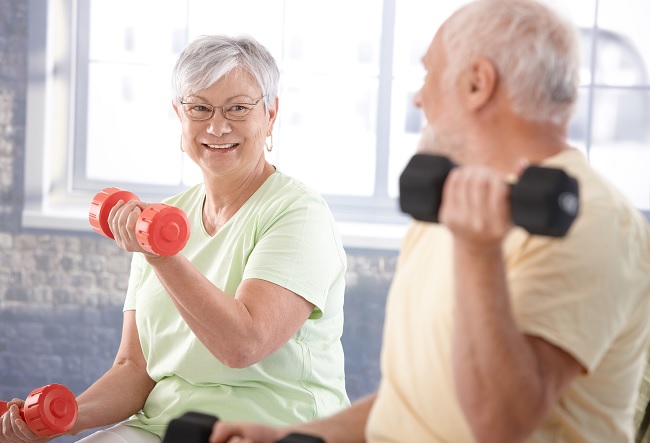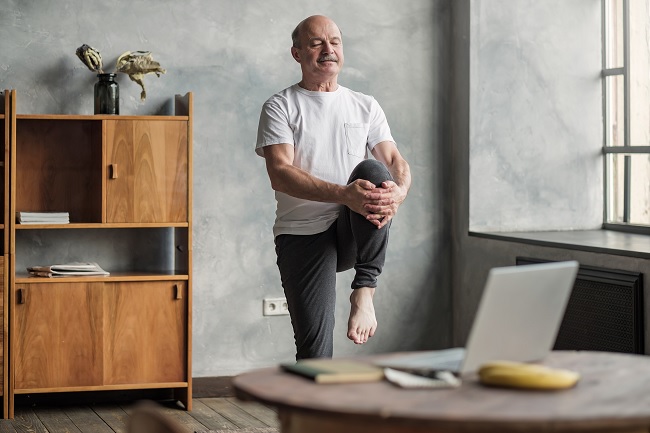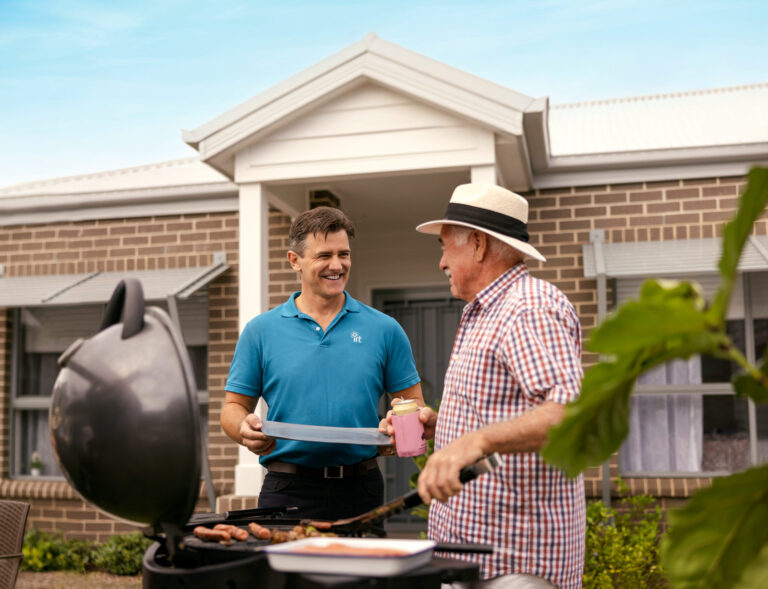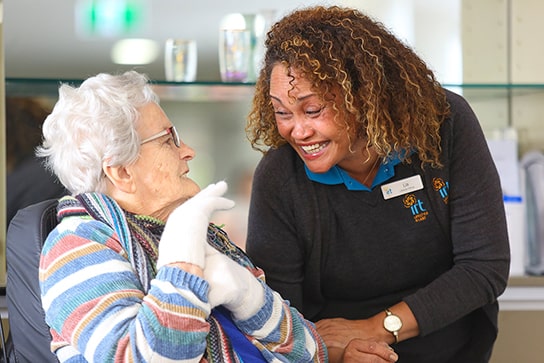Here’s what happens if you neglect your physical health
Staying fit can be hard sometimes, but we’ve got plenty of simple tips to help keep you active.

While our bodies might change as we age, older adults can still get many benefits from being active. And you can get these benefits without joining a gym or buying special gear.
Getting active with others is a great way to stay connected and meet new people. Being socially connected supports your wellbeing, especially as you get older.
So let's talk more about ways to improve your physical health and in turn help to improve your overall lifestyle and wellbeing, including your mental health and blood pressure.
Let's get physical
The Australian Institute of Health and Welfare says not enough physical activity can be detrimental to your health.
Low levels of physical inactivity are associated with chronic health problems such as Type 2 diabetes, dementia and osteoporosis. Your mental health can also be impacted by neglecting your physical health.
But here's the good news. According to Active and Healthy, a web-based NSW Health resource directory for adults aged 50 years and over, being active has benefits for your mind as well as your body. It can:
- keep you independent and able to do everyday activities
- improve your balance and prevent falls
- improve your strength and fitness
- lower your risk of high blood pressure, high cholesterol, Type 2 diabetes, heart disease, bone problems, and some types of cancer
- prevent and ease symptoms of anxiety and depression
- help you think, remember, concentrate and solve problems.
So how much exercise should I be doing?
According to the Australian Government's Department of Health and Aged Care, adults aged 18 to 64 should be active most days, preferably every day, and should do either:
- 2.5 to 5 hours of moderate intensity physical activity – such as a brisk walk, golf, mowing the lawn or swimming
- 1.25 to 2.5 hours of vigorous intensity physical activity – such as jogging, aerobics, fast cycling, soccer or netball
- an equivalent combination of moderate and vigorous activities.
For people aged 65 years and over, the department recommends at least 30 minutes of moderate intensity physical activity on most, preferably all, days.
It may seem like a lot, particularly if you don’t have a well-established exercise routine. But no need to panic, you’re probably already doing everyday activities which are all forms of exercise such as climbing stairs, gardening, vacuuming and mopping.

Start off slow
Exercise can be done anywhere – at home, in a park or at a gym, which is great because it suits everyone’s needs, budget and comfort level.
Increasing your physical activity every day can help you look and feel good but remember, it’s important to listen to your body, acknowledge any signs of discomfort and don’t push yourself too hard – especially when starting out.
Look for opportunities to walk – could you walk to the shops instead of driving? Or catch public transport and get off one stop early? How about meeting your friends for a walk and chat instead of meeting for a coffee? Or if you don’t feel steady enough to walk outdoors, you could increase your walking around your home or yard.
What activities should I be doing?
Active and Healthy says activities that get your heart rate up and help build fitness could include:
- aqua aerobics
- brisk walking
- group exercise classes
- swimming.
The exercise should be brisk enough to increase your breathing and heart rate but not so much that you can’t talk.
It is important to choose an activity that you enjoy, and remember, every bit of physical activity helps to improve your health.
Checkout what's online
If you prefer to be guided in your exercise, YouTube offers lots of videos on workouts for older people. Workout videos from the National Institute on Aging in the United States focus on balance, strength, endurance, and flexibility exercise for older adults.
Remember, it's important to check with your doctor before embarking on any new exercise routine.
Don't forget to stretch
Try to do some form of stretching every day – even if it is only while you are watching TV.
Stretching can help with preventing injuries and is good for your muscles too.
Activities to improve your balance, strength and prevent falls
To get you started, Active and Healthy have some simple exercises to improve your strength and balance that you can do at home. There are videos and images to guide you through the exercises.
If you have any concerns getting started with movement, talk to your health professional, such as your doctor, before you begin.
How to stay on track
Starting and sticking to a new routine can be a challenge, so here are some tips from Active and Healthy to help you not only start but stick to a new routine:
- Be realistic - start slowly and increase physical activity over time.
- Choose an activity that you enjoy.
- Decide if you like to exercise alone or in a group.
- Think about whether you prefer a routine or flexibility.
- Even small increases in physical activity make a big difference to your health.
- Consider what is important for you in the long term – staying independent, enjoying travel, spending time with friends and family.
- Remember your strengths – how have you made positive changes in the past, such as getting fit, stopping smoking, and losing weight?
- What barriers might get in the way of achieving your goals – weather, lack of time, illness, pain, transport, lack of motivation, forgetting? How can you work around these problems?

More resources
Want to know more about improving your physical health, looking after your body, reducing and relieving stress and improving your diet? Here are some additional resources for you:
- For more details about being active and staying active visit Active and Healthy. This website can help you find local exercise programs in your local NSW area and provides information and tools that can assist you to increase your physical activity.
- Queensland Health has a Queensland Stay on Your Feet program with resources for healthy active ageing.
- In the ACT, Council on the Ageing (COTA) has the Strength for Life program which helps older people improve their physical strength, fitness and social connection.
- Wanting to understand better how exercise can improve your mental health? You can read more here about the 10 benefits of exercise for mental health.
- We all know that a good diet is essential for good health and nutrition. Healthy eating is necessary for strong bones and teeth and to help us maintain a healthy weight, which in turn protects us from heart disease, diabetes, high blood pressure, high cholesterol and some cancers. You can read more about having a good diet here.
- Want to relieve stress in your life? Read more here about ways to relieve stress at any age.


Make the most of your retirement with IRT
If you’re interested in downsizing your house and upsizing your life, IRT has more than 30 retirement villages across NSW, Qld and ACT. Find out more about the possibilities of village life and how one of our independent living communities can suit you and your unique needs.
Find out moreYou may also like
Palliative care vs end of life care: what's the difference?
What is palliative care? People think palliative care is the end of someone’s life, but there’s so much more to it.
Choosing an Aged Care Centre: What to consider
Moving from your home into a residential aged care centre can be a rewarding experience for you or your loved one.


